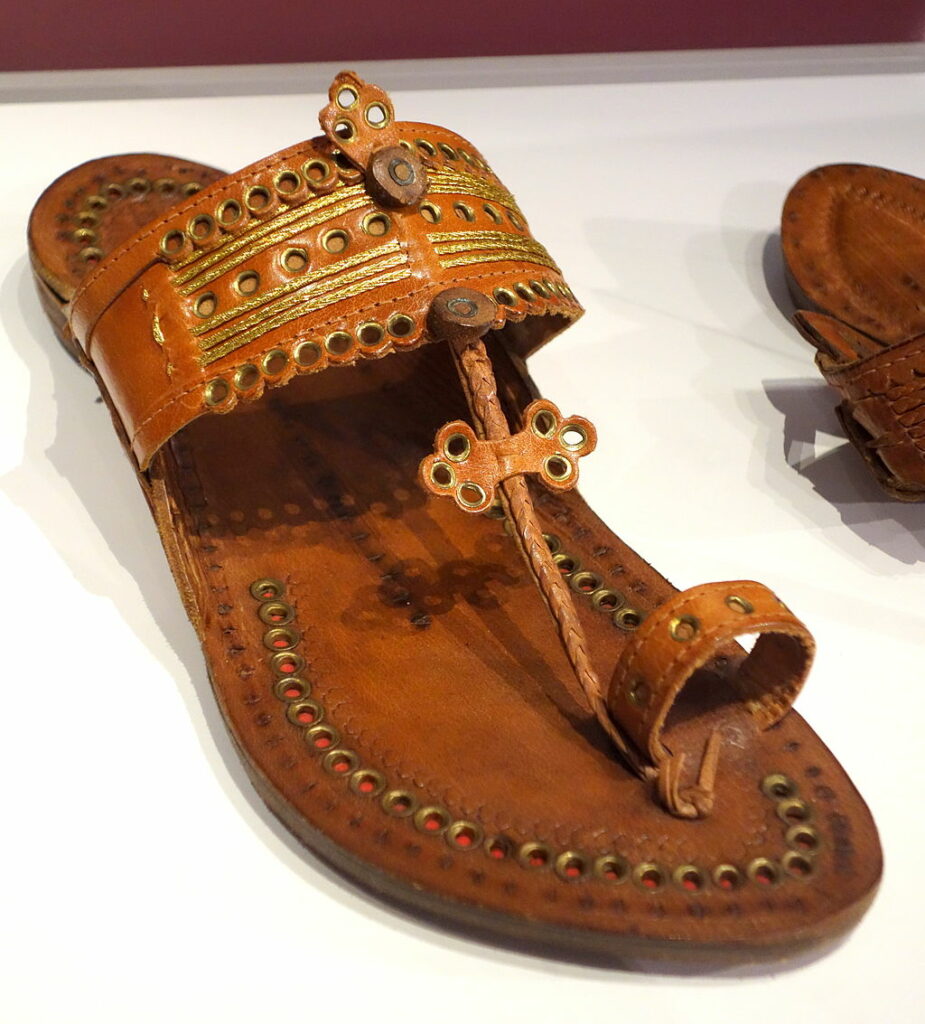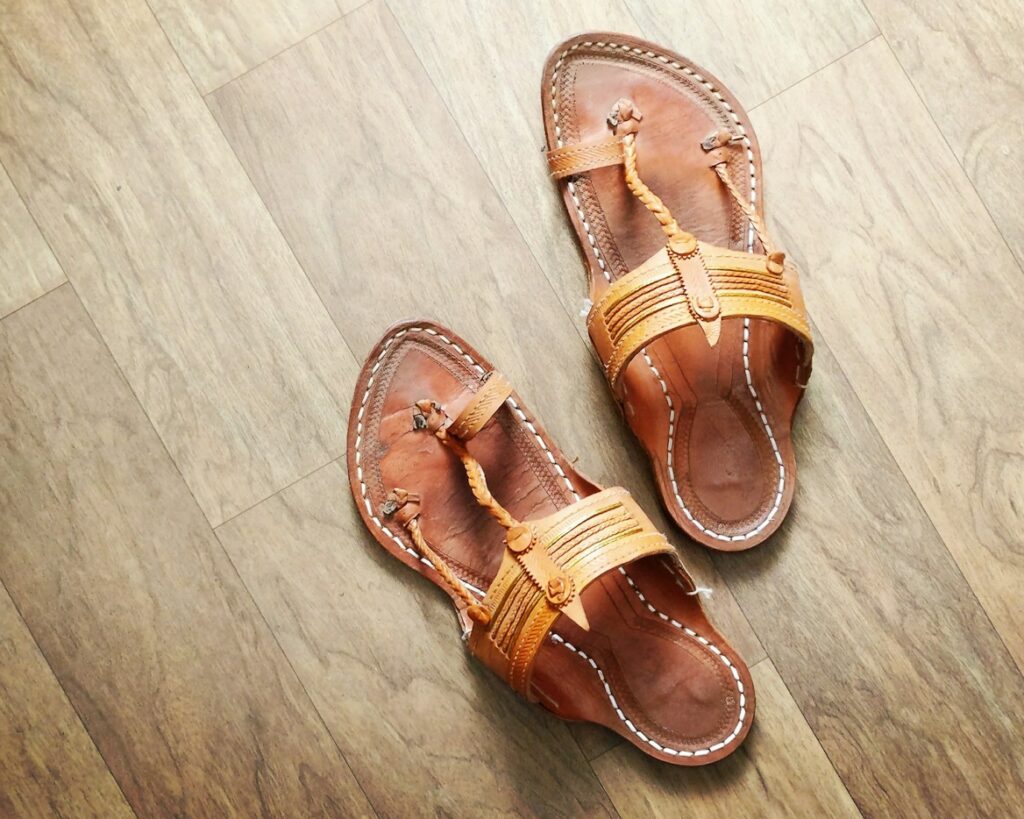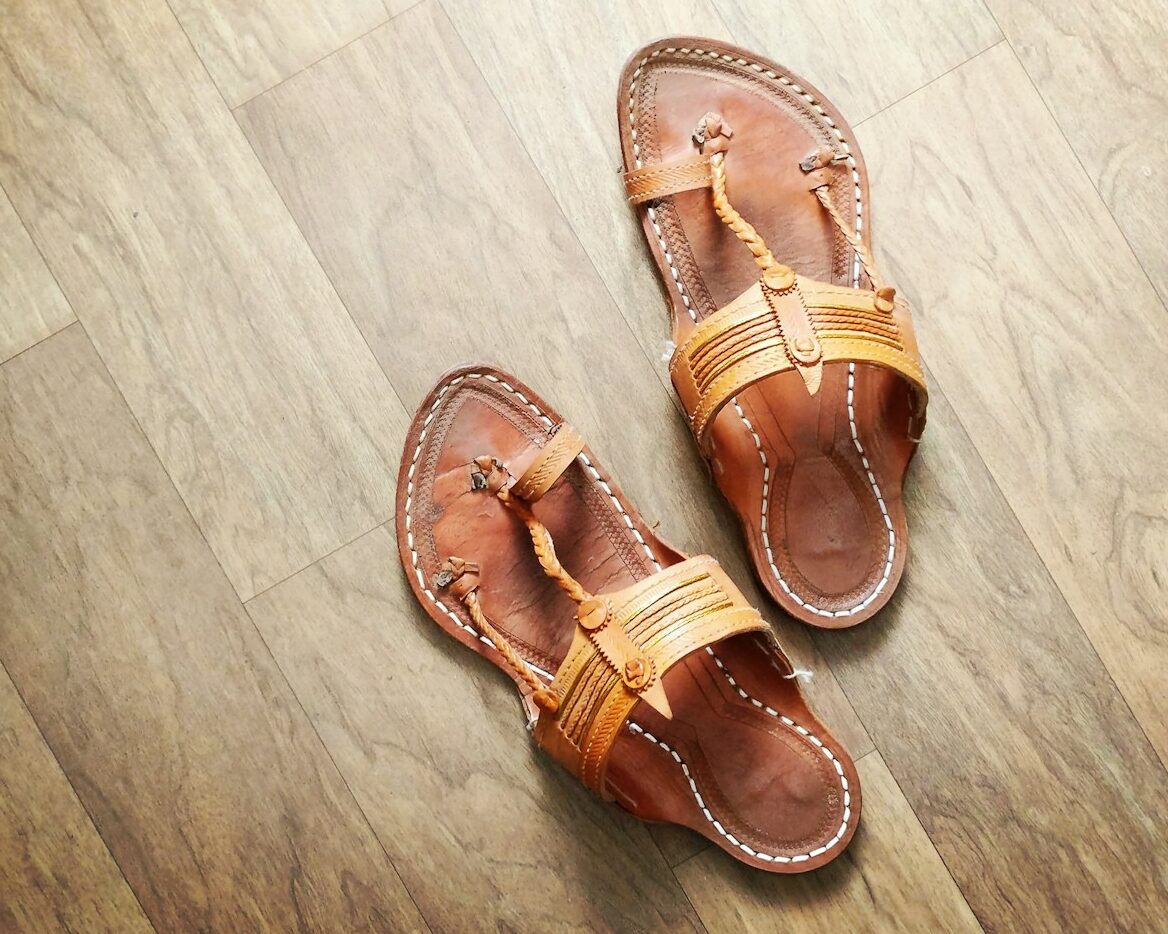About Kolhapuri chappals
One of the very first things I bought on my first trip to India was a pair of Kolhapuris. You may not know the name, but hippies brought these Indian-made sandals (known in India as chappals) to the attention of the west by buying them and wearing them while on the “Hippie Trail” in the 1960s and 70s.
But in India, they have long been made, worn, and loved by every sector of society.
Kolhapuri chappals are handcrafted leather sandals from Maharashtra that date back to the 12th century. Originally crafted from buffalo hide and tanned with vegetable dyes, they were designed to endure harsh climates and rugged terrain.
In the 18th century, they gained popularity as “Kolhapuris,” and spread to regions beyond Kolhapur. Their simplicity, comfort, and durability made them a hit across social classes and they gained mainstream popularity in the 20th century.

Kolhapuris are a cottage industry in India
The art of Kolhapuri making is a community craft that is mostly done in cottage industries using traditional hand-stitching methods, and without nails. Recognized for their cultural value, Kolhapuris now carry a GI (Geographical Indication) tag, which is supposed to help protect this enduring symbol of Indian heritage and the livelihoods behind it.
Unfortunately, the GI tag didn’t help in this case.
In June 2025, the Italian couture designer Prada featured a pair of Kolhapuris on the runway at a cost of $1,200 USD without any acknowledgment about the shoes’ Indian origins.
In India, there has been an understandable uproar about the theft of this iconic craft and it’s transformation into a European, high-priced luxury item.
The issue has been covered by everyone from mainstream media to fashion bloggers, and people who speak and act on behalf of the artisans of India — like Laila Tyabji, founder of Dastkar, and Pritha Dasmahapatra (known online as Tiptopped). Pritha addressed the issue on her popular Instagram page, emphasizing the need to acknowledge the origins and remove discrimination against the Chamar people.
Authorities in India have asked Prada to meet with the artisans who make kolhapuris, and to make amends. According to India Today, “A Public Interest Litigation (PIL) has been filed in the Bombay High Court seeking a direction to restrain fashion brand PRADA from commercialising and using ‘toe ring sandals,’ which are essentially ‘Kolhapuri Chappals’ that are originally a GI Tagged product from Western Maharashtra. It further demands that the rights of the Indian artisan community be expressly recognised. The plea also seeks compensation for the artisan community for reputational and economic damage.”
Kolhapuri chappals are just one example of the many time-honoured, hand-made arts and crafts of India that are an intrinsic part of the culture. I heartily agree they should be preserved, protected, and acknowledged as precious to the culture — and also the livelihoods of the makers. There are countless other incredible arts and crafts in India that also deserve the same level of respect, protection, and acknowledgement. I hope this issue creates such a movement both in India and around the world.
Buy kolhapuris in india
Kolhapuri chappals are on my list of Top 10 things to buy in India. You can easily find them in most markets — such as Janpath in Delhi and Bapu Bazaar in Jaipur.


